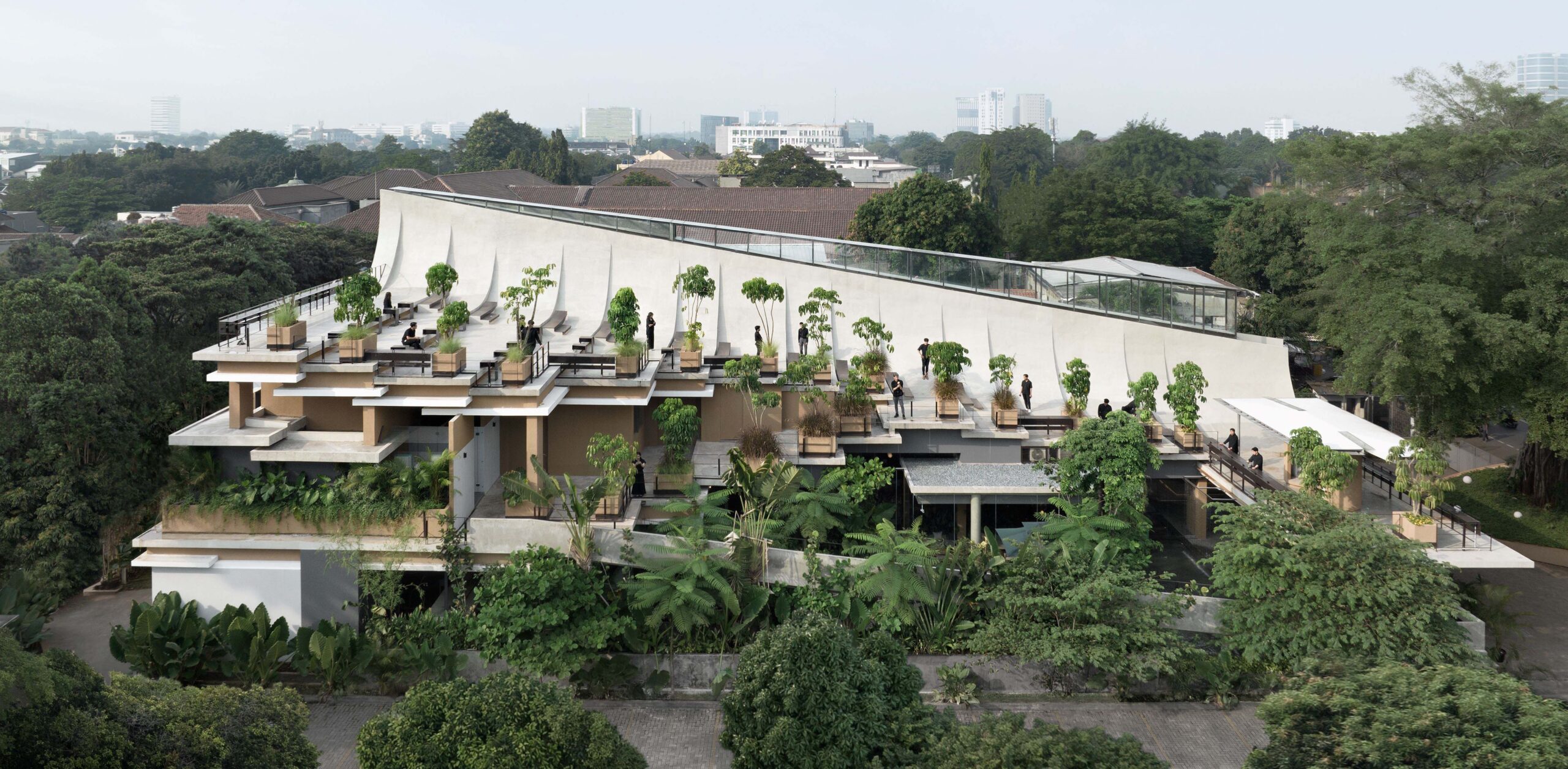Designers host concrete "pour party" to involve public in furniture-making process


Design studios Cassius Castings and Limba have created a concrete and plywood bench for a restaurant in Toronto and hosted an event to involve the public in its production.
The two studios were commissioned to design a modular seating unit for Rooms Coffee – a Japanese cafe and listening lounge in a post-industrial building in Toronto's Dovercourt Village neighbourhood.
Building on Cassius Castings founder Thomas Musca's past work, the team created what it calls the Bubby System, a series of long, four-sided elements with slots to insert wooden plants for connecting the modules and supporting the seater.

The bench was then inserted in the middle of the cafe and can be reconfigured.
But the final project, according to the team, is just one element of the project that Musca has been working on since 2019, where he takes up residency somewhere and performs a public pour of concrete into moulds, made out of plastics and wood.
Musca has carried out several such projects, from Brooklyn music venue and cultural hub Public Records to guerrilla installations of benches in public spaces.

"I'll do a residency, building the mould on site, for however many weeks or days it takes," said Musca.
"This culminates with a large pour party, because I've been able to augment the concrete with glass fibers and plasticizers, so it cures in only half an hour."

The Toronto piece was the first one with Limba, which was recently founded by Musca's schoolmate at Cornell, Ian Pica Limbaseanu.
Musca said that they managed to get over 100 people in an alley to take part in the pour, on one of the hottest days in the year.
"They wanted to be there. They wanted to interact with it," he said.

For his part, Limbaseanu said that the concrete pouring party "opened the doors" to the furniture-making process, for a piece that will exist in a space important to the local community.
"It's not often you have this opportunity with a piece of furniture, to watch it be created in such a palatable amount of time," he told Dezeen. "People love to see how that works."
The Bubby System was a new iteration of some of Musca's past work, as it included complex wooden elements designed to add comfort to the experience.
With its deep seats and low backs, the Bubby System – as currently set up – can seat up to six people, but more modules could be added to either side.
Limbaseanu said the rounded edges of the concrete and the wood connections were designed to provide a degree of comfort even with the unusual angles of the chair.

He said the flexibility of the chair in modularity and the relative comfort provided by the industrial concrete and plywood reflect the ethos of the cafe, with its location in the post-industrial building.
"It's turning a cold space into somewhere meant for human enjoyment," said Limbaseanu.
Concrete furniture is not uncommon, and Dezeen has rounded up six examples of the hardy material used for seating.
Elsewhere in Toronto, artist Jyhling Lee created a steel sculpture informed by origami for the public.
The photography is by Noah Gotlib.
The post Designers host concrete "pour party" to involve public in furniture-making process appeared first on Dezeen.



















































